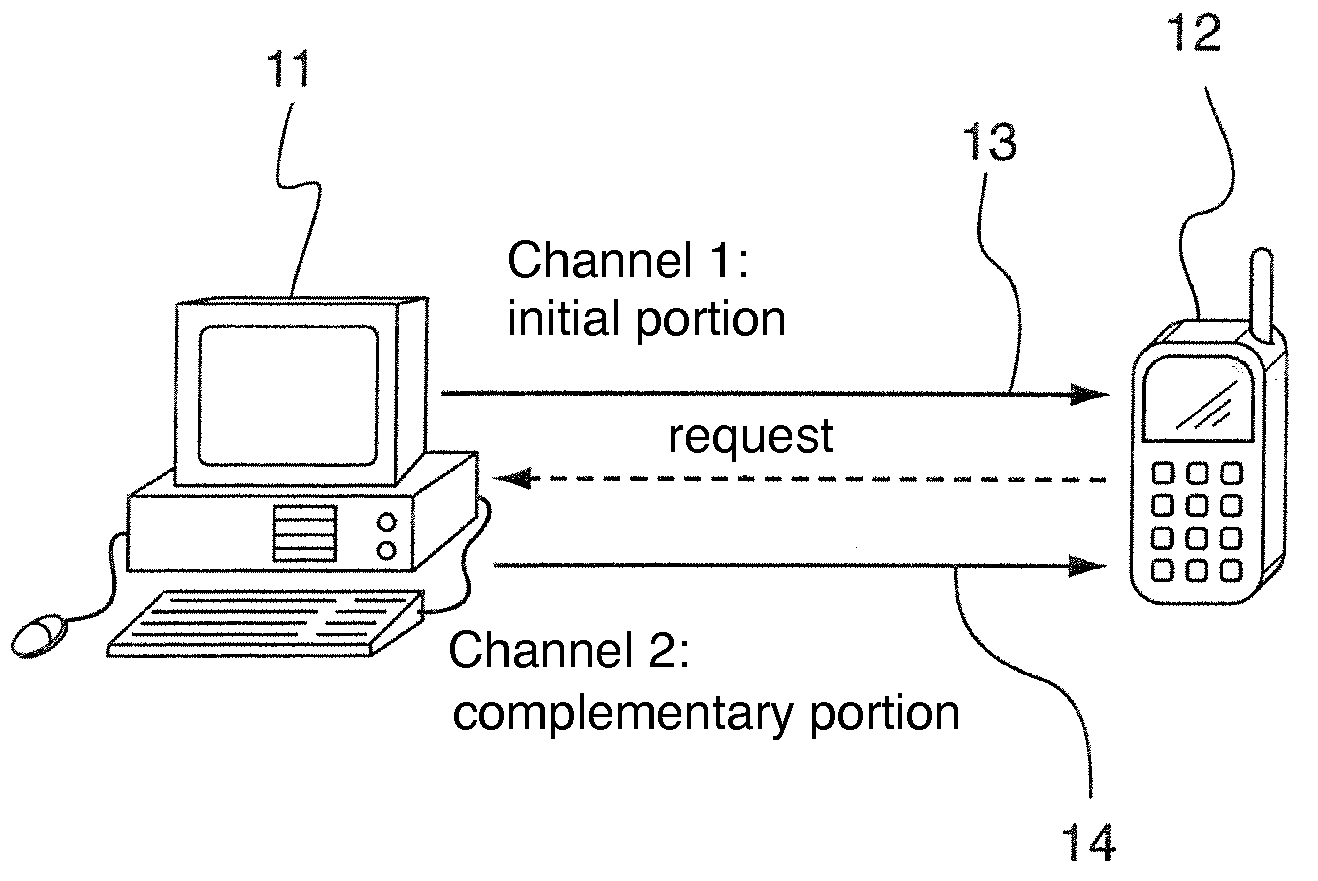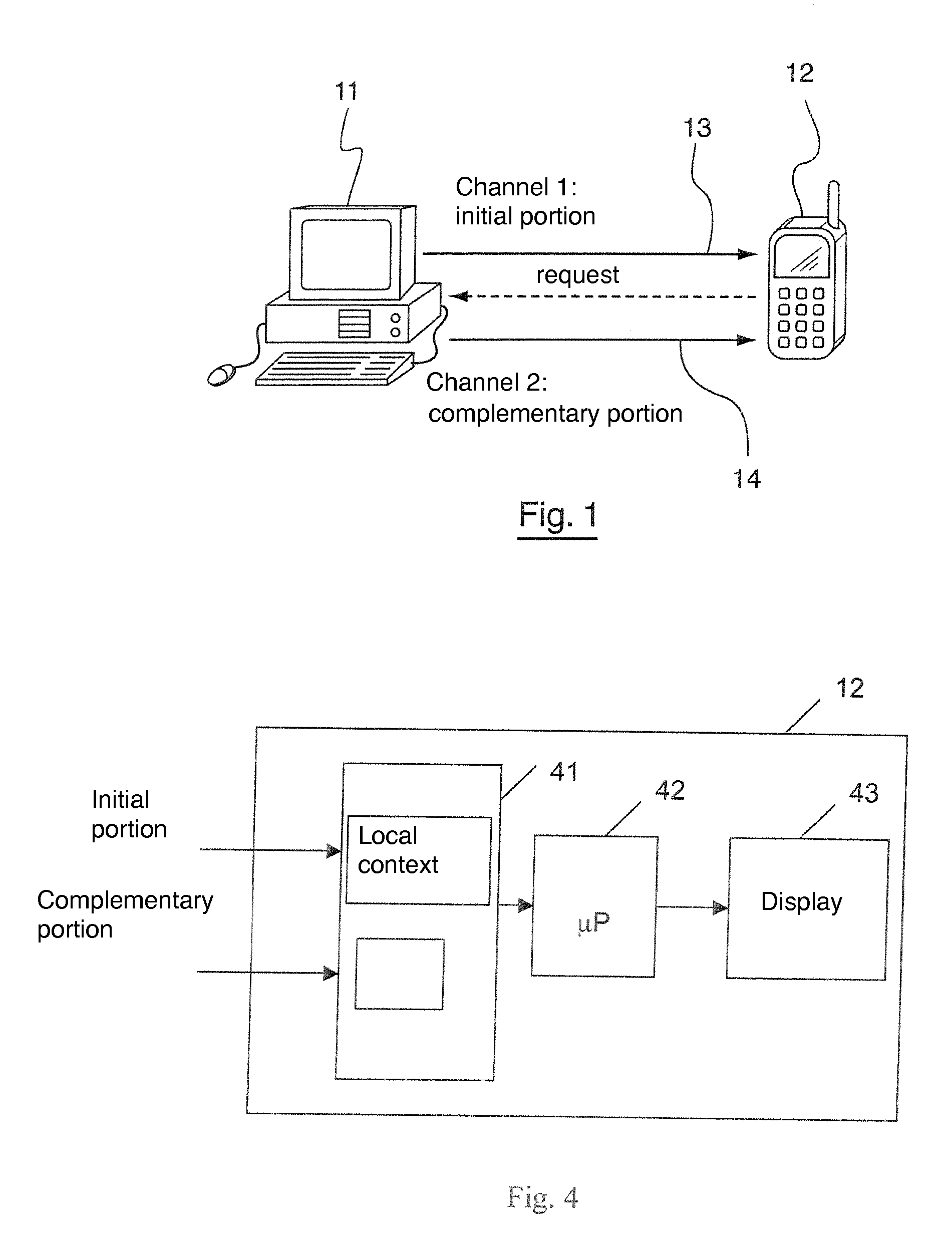Transmission of multimedia content to a radiocommunication terminal
a radiocommunication terminal and multimedia technology, applied in the direction of wireless commuication services, instruments, broadcast system receiving, etc., can solve the problems of wasting transmission resources, requiring the downloading of an entire, and wasting time, so as to quickly find the different commands
- Summary
- Abstract
- Description
- Claims
- Application Information
AI Technical Summary
Benefits of technology
Problems solved by technology
Method used
Image
Examples
Embodiment Construction
[0105]The general principle of an embodiment of the invention is based on the partitioning of multimedia content, including at least one multimedia scene and a series of commands making it possible to have this scene change, in at least two portions, of which an initial portion and at least one complementary portion.
[0106]A first portion of content, called initial portion, is first transmitted to the radiocommunication terminal. Then, a portion called complementary is transmitted to the radiocommunication terminal, in response to a request coming from the terminal.
[0107]An embodiment of the invention thus makes it possible to rebuild interactive multimedia scenes giving the impression of service fluidity, while reducing the quantity of data downloaded by the terminal.
[0108]Dividing the multimedia content to be transmitted into incremental scenes also makes it possible to achieve considerable savings on the servers.
[0109]Indeed, a server is normally limited to processing N clients in...
PUM
 Login to View More
Login to View More Abstract
Description
Claims
Application Information
 Login to View More
Login to View More - R&D
- Intellectual Property
- Life Sciences
- Materials
- Tech Scout
- Unparalleled Data Quality
- Higher Quality Content
- 60% Fewer Hallucinations
Browse by: Latest US Patents, China's latest patents, Technical Efficacy Thesaurus, Application Domain, Technology Topic, Popular Technical Reports.
© 2025 PatSnap. All rights reserved.Legal|Privacy policy|Modern Slavery Act Transparency Statement|Sitemap|About US| Contact US: help@patsnap.com



